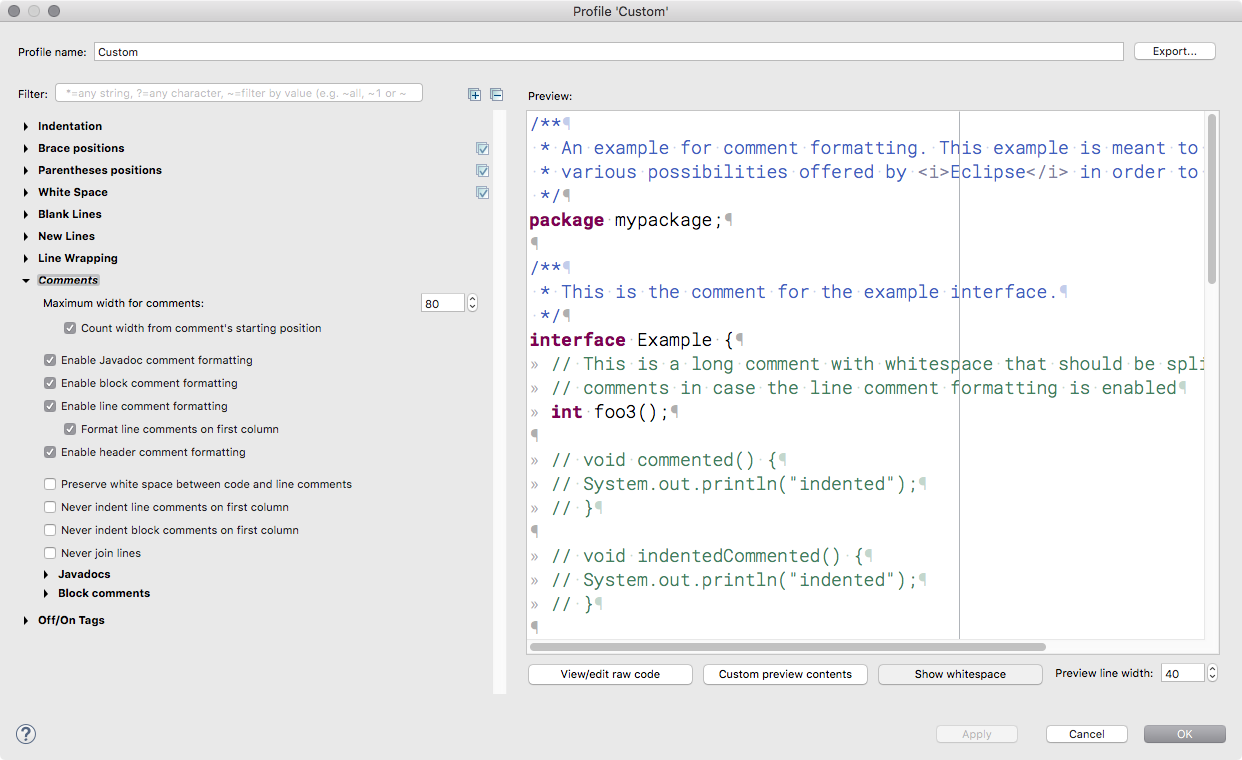

- #VS CODE JAVA FORMATTER INSTALL#
- #VS CODE JAVA FORMATTER WINDOWS 7#
- #VS CODE JAVA FORMATTER DOWNLOAD#
Click on it and you will find all the different versions. For instance on Windows 10, just go to Settings and under Apps, you will find Java.
#VS CODE JAVA FORMATTER INSTALL#
If you are on a 64-bit machine, then you can install the 64-bit JDK and uninstall the 32-bit one. On a 32-bit version you'll get something like: Java HotSpot(TM) Client VM (build 20.1-b02, mixed mode, sharing) Note the 3rd line, which shows that this is a 64-bit version. Java HotSpot(TM) 64-Bit Server VM (build 20.2-b06, mixed mode) Java(TM) SE Runtime Environment (build 1.6.0_27-b07)
#VS CODE JAVA FORMATTER WINDOWS 7#
On Windows 7 with 64-bit Java 6 I get: java version "1.6.0_27" To check your version of Java, run java -version
#VS CODE JAVA FORMATTER DOWNLOAD#
Specifying the JVM path in eclipse.ini is strongly recommended because doing so isolates Eclipse from any potential changes to your system PATH that some program installers might make (I'm talking to you, Oracle!).Īnother option would be to download and use 32-bit Eclipse instead of 64-bit, but it's still strongly recommended to specify the path to the JVM in eclipse.ini.

The instructions are detailed in the Eclipse wiki page, but basically you have to specify the -vm option in the ini file - make sure to read the wiki page carefully as the format is very specific. The best way to fix this, assuming you do in fact have 64-bit JRE or JDK on your system, is to specify in eclipse.ini exactly which JVM you want it to use. This can happen when a system has more than one JVM installed, as is often the case on Windows 64-bit (for example, the JRE download page uses the bit-ness of the browser to determine what bit-ness download to offer you, and many people use(d) 32-bit browsers even though they run 64-bit Windows). Program Files is the folder where 64-bit Windows places 64-bit programs. Program Files (x86) is the folder where 64-bit Windows places 32-bit programs. However, the version of Java that it's picking up is 32-bit, as indicated by where it is coming from, on this line: -vm C:\Program Files (x86)\Java\jre7\bin\javaw.exe Your version of Eclipse is 64-bit, based on the paths and filenames. I need to know the same alternative for Visual Studio Code. Note: This profile might not work while formatting xml files. This can be done quickly with the shortcut Ctrl+ Shift+ F. Now, every time Eclipse uses its auto-formatting features, it will conform to the standards in the config file.

Navigate to Java->Code Style->Formatter.This can be done quickly with the shortcut Ctrl+ Alt+ L. Now, every time Intellij uses its auto-formatting features, it will conform to the standards in the config file. Select 'Eclipse XML Profile' and browse to the downloaded config file.Next to Scheme, click Manage and then Import….In the Intellij settings (Ctrl+Alt+S), go to Code Style.For example in IntelliJ and Eclipse for Java we do this way: I am looking for solution for importing Eclipse Java Formatter Profile in Visual Studio Code. Jindent is a powerful source code formatter for the programming languages Java, C and C++ and offers.


 0 kommentar(er)
0 kommentar(er)
